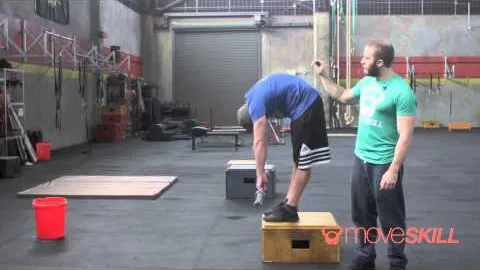
The Jefferson Curl Exercise: Enhancing Flexibility and Mobility
The Jefferson Curl exercise is an effective and popular movement that helps improve flexibility and mobility, particularly in the posterior chain muscles. Named after the renowned American President Thomas Jefferson, who was known for his interest in physical fitness and spinal health, this exercise combines elements of a traditional forward fold with an added emphasis on spinal articulation.
The Jefferson Curl exercise involves starting in an upright position and gradually bending forward, allowing the spine to round and lengthen. This movement targets the muscles in the lower back, hamstrings, glutes, and calves, and showcases the body's ability to articulate the spine under load.
The Jefferson Curl exercise offers numerous benefits, making it a recommended exercise for those looking to improve flexibility and mobility. Some of the key advantages of practicing this exercise regularly include:
Performing the Jefferson Curl exercise requires proper form and technique to ensure maximum benefit and prevent injury. Follow these steps to execute the exercise correctly:
Starting Position: Begin by standing tall with your feet hip-width apart. Keep your knees slightly bent.
Initiating the Movement: Slowly begin to round your spine, starting from the head and neck and working your way down to the tailbone. Imagine rolling the spine down, vertebra by vertebra.
Controlled Forward Fold: Continue to round your spine as you fold forward. Maintain control and be mindful of your limits. Do not force yourself to go deeper than your body allows. You should feel a stretch in your hamstrings and your spine rounding.
Reaching the Full Depth: Once you reach the full depth of your forward fold, take a moment to breathe and hold. Maintain an active core and engage your glutes to help stabilize the position.
Returning to Upright: Begin the ascent by reversing the movement, starting from the tailbone and stacking the vertebrae on top of each other until you are back in the starting position.
Repeat: Perform the Jefferson Curl exercise for several repetitions, gradually increasing the depth and intensity as your flexibility improves.
While the Jefferson Curl exercise offers many benefits, it is essential to be cautious and consider the following precautions and tips:
To incorporate the Jefferson Curl exercise into your workout routine effectively, consider the following recommendations:
In conclusion, incorporating the Jefferson Curl exercise into your fitness routine can be an effective way to improve flexibility and mobility, strengthen your posterior chain muscles, and enhance your overall athletic performance. However, it is essential to approach this exercise with caution, gradually increasing the intensity, and always listening to your body. Consult with a fitness professional if you have any concerns or underlying medical conditions before attempting this movement.
If you're looking for a gym, fitness club or yoga studio, you've come to the right place.
You can find information about gyms in your area. Browse catalog of gyms and find gyms with classes which are you looking for.
On gym page you can find simple information like address, phone or website. You can find list of available classes. You can check availability of personal training or small group classes. On place page you can also see information about open hours.
You can find gyms near you with amenities, courts, studios and equipments.
Use our map to find gym at your city or district.
In Gym Navigator you can find list of exercises with movies for many body parts.
You can browse exercises catalog and find exercises the best of you.
You can also find exercises grouped into workout plans, which you can use to improve you body. Each routine show you exercises one by one and give you possibility to count you progress and count down rest time.